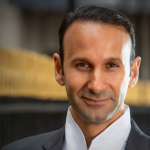Why do organisations need a crisis to understand they have a problem?

Shareholders, customers, employees, suppliers and stakeholders have grown weary of seeing scandalous headlines condemning large businesses and institutions as they lurch from one crisis to another. From a royal commission about child sexual abuse, to misconduct in the financial sector, age care quality and safety, exploitation of disabled people and so on and on….
Why do organisations need to have fires and Royal Commissions in order to understand that there is a problem?
What is it that leads executives and workers alike down a destructive path of bad behaviour and notoriety that destroys businesses, financial wellbeing, shareholder value and reputations in the process?
The answer is an appreciation regarding the neuro-processes of leadership decision making.
Decision making is difficult! Especially when the outcomes are far into the future and it is hard to calculate what would have happened had a different decision been made.
All decisions are affected by inherent biases of the individuals and teams involved in making them. We are all biased…it’s how our brain is wired!
Our thinking process is performed using two systems:
- the automatic thinking (system 1) – fast, automatic and effortless; and
- the systematic (system 2) – the slow, controlled, rule based, effortful process.
When a new skill is being learned, system 2 is being applied. By practicing the skill and becoming proficient, we transition to using system 1.
For example, when driving an unfamiliar road, we are usually using system 2. This is also why so many car accidents happen near home (when we are driving the same way every day we are using system 1).
Yesterday in an interview, one of the fire fighters combatting the bushfire disasters mentioned that they had so many practices and drills over the years, that when the fire near his hometown erupted, they all acted fast as if on ‘auto pilot’.
That is the power of using system 1.
System 1 is based on the heuristic thoughts, our biases. Using this system saves us time and energy. Using system 2 all the time is simply not feasible.
The problem within organisations arises when senior executives and staff are using system 1 instead of system 2 for making important decisions.
Adding to this complexity is that we are often unaware which system we are using at a certain time. So, we find ourselves believing that we are using system 2, while actually we are basing our decisions on our inherent biases.
We cannot see through our neuro-processes and sometimes make decisions without knowing what actually lead to them…what influenced us.
There are over 175 biases and each affects us differently. Some explain more than others the failures in decision making at management, board and policy making levels.
For example: WYSIATI is when our brain convinces us that What we (You) See Is AllThere Is.
This means that we are convinced that there is no need to look for further information and hence make decisions based on current knowledge, which causes us to consult with people who think like us, look for the information that supports our beliefs and ignore contradicting information and opinions.
The good news is that there are diagnostic tools that can help decision makers in business understand the inherent biases that they tend to use individually and as a team and learn how to design decision-making environments that mitigates these biases. The diagnostic tools are based on Decision Science, which is a relatively new field combining behavioural economics, psychology and neuroscience.
In short, it could be the solution for those organisations seeking to ensure 2020 is not another year of lost productivity, goodwill and value. Executives, teams and employees should be proactive and learn how to design a decision-making environment that shields from these biases and facilitates better decision-making outcomes and results.
Dr. Zivit Inbar is a People, Culture, Leadership, Ethics and Performance expert in the field of Technology VC’s and Startups An Adj Professor in the MBA Program at Deakin University (Melbourne). She is a Graduate of Harvard Kennedy School Executive Program, a Graduate of the Australian Institute of Company Directors and a Fellow Certified member of the Australian Human Resources Institute.








